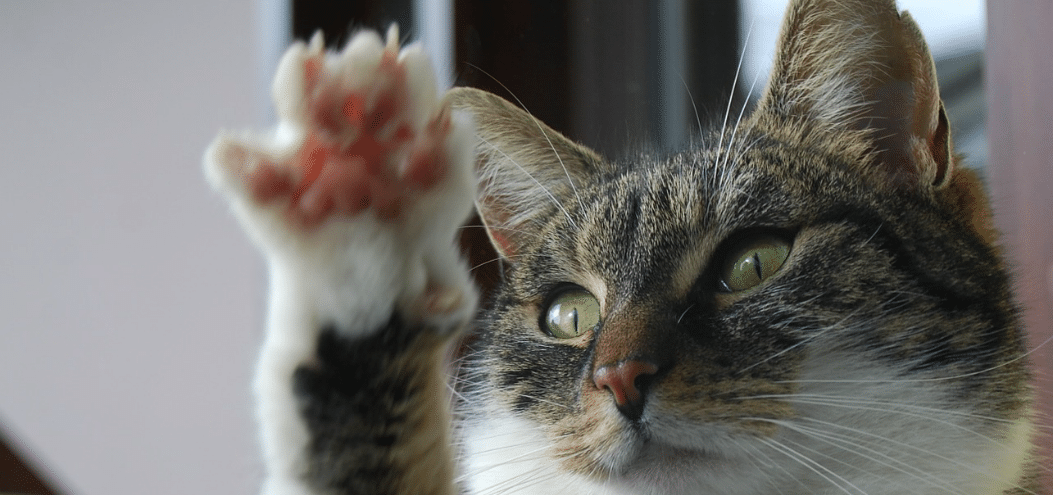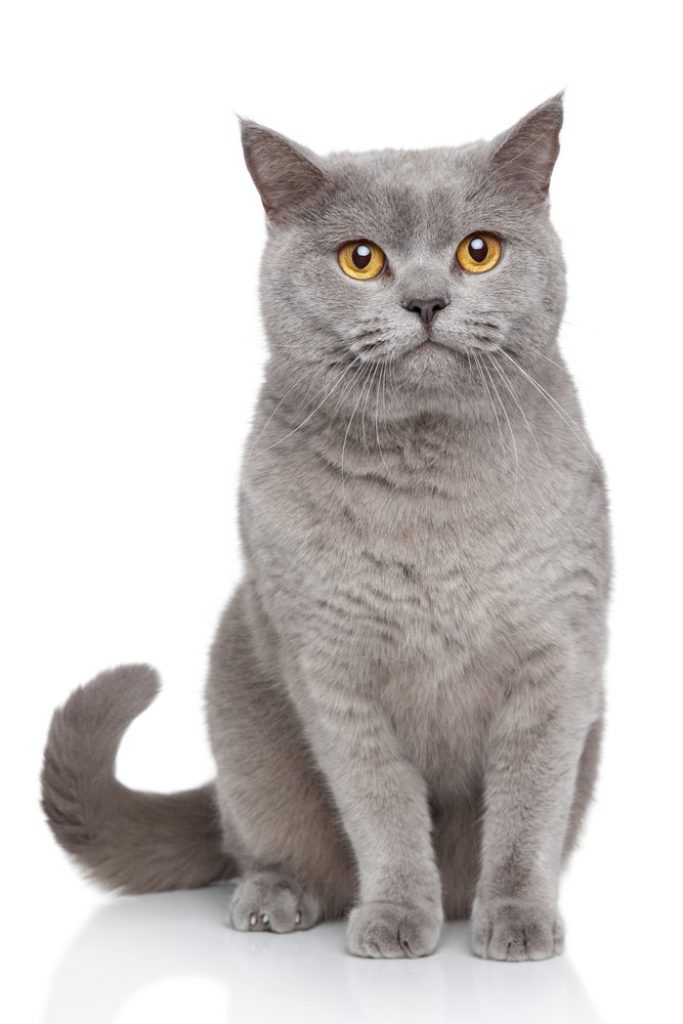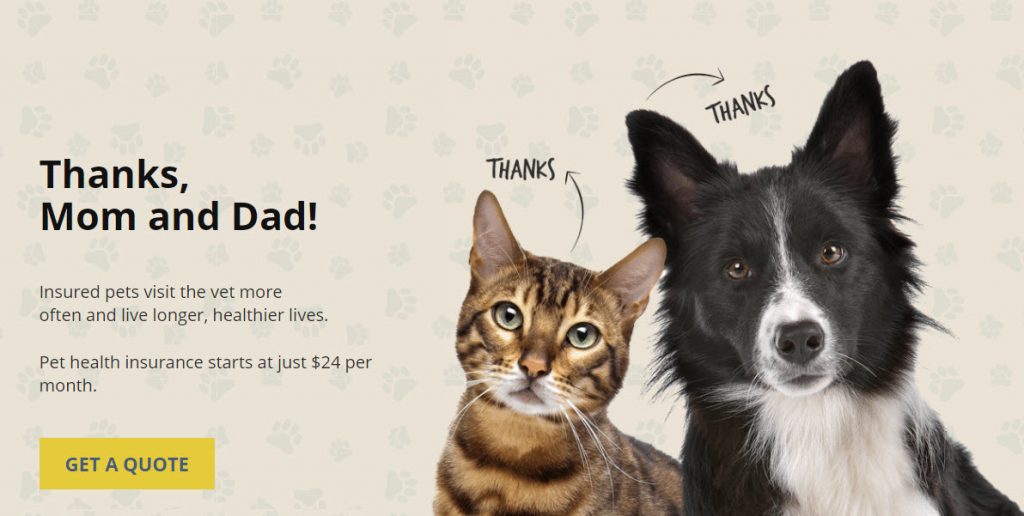Declawing Cats
Free Pet Insurance Comparison
Compare Quotes From Top Companies and Save
Secured with SHA-256 Encryption
Dr. Pippa Elliott BVMS, MRCVS
Veterinarian
Dr Pippa Elliott BVMS, MRCVS is a veterinarian with over 30 years of experience in companion animal practice. In 1987 she graduated from the University of Glasgow, with a degree in veterinary medicine and surgery. She works at Blythwood Vets and the People’s Dispensary for Sick Animals (PDSA). Pippa is an advocate of Fear-Free Practice, an animal addict, and a veterinary writer. She is also w...
Veterinarian
UPDATED: Dec 18, 2023
Pet Insurance U receives compensation from the third parties included on this site. This includes payment for clicks from our site to insurance providers’ sites and quote requests generated. Our rankings and reviews are not affected by payments from the insurance companies. The compensation we receive allows the site to be free and regularly updated. Our goal is to review every pet insurance provider, but not all companies are listed on the site.
And many of the companies we review do not pay us anything. We simply rate, compare and review their plan because we feel it will be valuable to you. Our reviews are guaranteed to be unbiased, professional and advertising compensation does not influence rankings.
We are a free online resource for anyone interested in learning more about pet insurance. Our goal is to be an objective, third-party resource for everything pet insurance related. We update our site regularly, and all content is reviewed by pet insurance experts.
UPDATED: Dec 18, 2023
Pet Insurance U receives compensation from the third parties included on this site. This includes payment for clicks from our site to insurance providers’ sites and quote requests generated. Our rankings and reviews are not affected by payments from the insurance companies. The compensation we receive allows the site to be free and regularly updated. Our goal is to review every pet insurance provider, but not all companies are listed on the site.
And many of the companies we review do not pay us anything. We simply rate, compare and review their plan because we feel it will be valuable to you. Our reviews are guaranteed to be unbiased, professional and advertising compensation does not influence rankings.
On This Page
Should you declaw your cat?
Around 25 percent of you are now quietly nodding because this is the percentage of U.S. cats that are declawed.
Of course, one person might have several cats declawed while in some cities the procedure is illegal, so this skews the statistics.
But you still get the point. Declawing is common.
Table of Contents:
Need Pet Insurance?
FACT: Pet insurance pays up to 90% of vet bills when your pet is sick or injured!
Pros and Cons of Declawing Cats

OK, let’s discuss the main arguments in favor of and against declawing:
Pros of Declawing Cats
Declawing saves lives because it’s either that or surrender a cat to the shelter.
There’s no denying a cat that claws furniture is destructive. Those sharp nails shred soft furnishings and splinter wood.
If kitty damages an antique dresser, this may be the last straw for a house-proud pet parent. Given a choice between surrendering her to a shelter (and death row), then declawing can seem a good option.
Now, let’s get to the main argument against declawing cats.
Related: 10 Things You Must Know Before You Buy Pet Insurance
Cons of Declawing Cats
When Los Angeles Heights made declawing illegal, the number of cats surrendered to shelters fell by 22 percent. That’s right. Fewer cats were surrendered. This is because declawing creates behavioral issues rather than solving them.
Imagine the cat that comes home after declawing surgery desperate to relieve a full bladder. She goes to the litter box and starts to dig – only to be in excruciating pain. She links the pain to the litter box and avoids it in the future, and so begins a whole new behavioral problem of inappropriate toileting in the house.
Another issue is that cats use their claws to send out the message to back off. If, for example, you are playing rough with kitty, she may swipe claws in, and if you ignore the warning swipe claws out. The declawed cat may feel defenseless and may up the ante by going straight in for a bite, rather than a soft warning swipe.
Finally, thought not directly related to the health of your cat, declawing is an elective surgery. This means that cat insurance policies are not going to cover it. So the money is coming out of your pocket.
Enter your ZIP code below to view companies that have cheap pet insurance rates.
Secured with SHA-256 Encryption
Declawing Surgery
If you snap a nail, eventually it grows back. This is because the nail bed is not damaged and can still push out new growth.
Declawing is much more than nail clipping or they, too, would grow back.
The nail bed has to go, and the only way to do this is to remove the whole “fingertip.” Declawing surgery is the equivalent of amputating (technical term here, not an emotive one) the P3 digit, or the final knuckle bone of each toe on the front paws.
Think about it. How would losing all your fingertips affect you?
This might sound far-fetched, but it isn’t. Cats walk on their toes, and you’ve just removed the toe tips. This changes the way kitty walks, and that’s without considering she can no longer grip with her claws in order to climb.
Also, declawing surgery is painful. It involves slicing the skin, joint capsule, ligaments, blood vessels, and muscles that bind one toe bone to another. How can that not hurt? Of course, it does. It hurts a lot, which leads us nicely onto the problems associated with declawing.
Real Cost Savings from PetFirst Clients

Gidget
PetFirst saved his parents
$2,194
Artemis was a beautiful and friendly cat to all who were willing to pet him. Unfortunately, he developed feline diabetes which required regular vet visits and medications that his Mother could not otherwise afford on her fixed income. Having PetFirst insurance, she called and discussed the problem with a friendly PetFirst agent. To her surprise, she found out that Artemis’ ongoing required vet visits and medication would be covered by his PetFirst insurance. Artemis was able to live out the rest of his life with proper medical care and medicines thanks to PetFirst insurance.
Alternatives to Declawing Cats
Let’s see if we can reach a compromise where your cat keeps her claws, but she doesn’t scratch the furniture.
The first thing to understand is that scratching is a natural behavior. Asking a cat to stop scratching is like asking them to stop breathing. Cats claw to exercise the top part of their body, and crucially they do it to mark their territory.
Marking territory is a security thing that helps her to feel safe. This is why she chooses places that smell heavily of you, such as the coach or the bed. To stop this habit, you need to employ a give and take strategy to help keep your cat happy.
Scratching Posts
The “giving” is to provide a good sturdy scratching post beside the object you want left alone, with additional tips mentioned in our post How to Stop Your Cat from Scratching the Carpet. This means she still gets the satisfaction of scent-marking the spot but doesn’t damage the furniture.
Protect Furniture
The “taking” involves applying double-sided sticky tape on the furniture, so it feels unpleasantly tacky when she tries to scratch.
Now let’s look at protecting the furniture. It may sound obvious, but regular nail clipping is a great idea; once a month should do it. Pick a time when kitty is relaxed, and come armed with treats. Start by trimming one nail at a time, then give the reward. When she learns to associate a small snip with something tasty, she’ll soon cooperate.

Nail Caps for Cats
Another option to consider is tipping the claws with claw caps, such as Soft Paws. These allow the cat to behave normally but without doing the damage. The nail covers are widely available and relatively simple to apply.
So remember, declawing creates more problems than it solves. It makes your cat sore and stops her from expressing natural behaviors. So please, look at the alternatives.
Other articles you may find helpful:
Is Exotic Pet Insurance Necessary?
The Best Pet Insurance By State
Fun Facts, Dog FAQ, And Unsolicited Dog Advice
5 Training Commands to Save Your Dog’s Life
The Ultimate Guide to Safe Foods for Dogs
We have worked hard to provide you with all the free resources possible to help give you insight into the best pet insurance for cats, additional cat breeds info, common cat health issues, and a fun look at frequently asked cat questions.
Learn more about common cat health problems:
Arthritis in Cats, Cancer in Cats, Declawing Cats, Diabetes in Cats, Eye Infection in Cats, Hypoallergenic Cats, Hyperthyroidism in Cats, Overweight Cats, Vomiting Cats

Frequently Asked Questions
What is the significance of “Secured with SHA-256 Encryption” in the content?
The mention of “Secured with SHA-256 Encryption” indicates that the website or content is secured using SHA-256 encryption technology, providing a secure connection for users.
Should you declaw your cat?
Declawing is a controversial topic. While it may be seen as a solution to prevent furniture damage, it has drawbacks. Approximately 25% of U.S. cats are declawed. However, it can lead to behavioral issues, and some cities have made it illegal. Alternative solutions and the impact on pet insurance coverage are crucial considerations.
What are the pros and cons of declawing cats?
Pros of Declawing Cats:
- Saves lives by preventing cat surrender to shelters.
- Addresses destructive behavior, protecting furniture.
Cons of Declawing Cats:
- Can lead to behavioral issues.
- May cause pain during urination, leading to inappropriate toileting.
- Impairs the cat’s ability to defend itself.
- An elective surgery is not covered by cat insurance.
What does declawing surgery involve?
Declawing involves amputating the final knuckle bone of each toe on a cat’s front paws. This is a painful procedure, affecting the nail bed, skin, joint capsule, ligaments, blood vessels, and muscles. It alters the cat’s gait and ability to climb.
Are there alternatives to declawing cats?
Yes, alternatives include:
- Providing scratching posts.
- Using double-sided sticky tape on furniture.
- Regular nail clipping.
- Nail caps for cats, such as Soft Paws.
These alternatives aim to satisfy the cat’s natural scratching behavior without causing harm.
Can declawing affect pet insurance coverage?
Yes, declawing is an elective surgery not covered by most cat insurance policies. The cost would come out of the pet owner’s pocket.
Who is Melanie Musson, the published insurance expert mentioned in the content?
Melanie Musson is a fourth-generation insurance professional with in-depth knowledge of state-specific car insurance laws. She specializes in understanding insurance’s role in people’s lives, covering budgets to coverage levels.
Who is Dr. Pippa Elliott, the veterinarian mentioned in the content?
Dr. Pippa Elliott is a veterinarian with over 30 years of experience in companion animal practice. She graduated from the University of Glasgow and advocates for Fear-Free Practice.
What is the purpose of the “Advertiser Disclosure” section?
The “Advertiser Disclosure” section states that Pet Insurance U receives compensation from third parties on the site, including insurance providers. However, this compensation does not influence rankings, ensuring unbiased and professional reviews.
Why is the “Secured with SHA-256 Encryption” mentioned multiple times in the content?
The repetition emphasizes the importance of a secure connection, reassuring users about the safety of their data on the website.
Enter your ZIP code below to view companies that have cheap pet insurance rates.
Secured with SHA-256 Encryption
Dr. Pippa Elliott BVMS, MRCVS
Veterinarian
Dr Pippa Elliott BVMS, MRCVS is a veterinarian with over 30 years of experience in companion animal practice. In 1987 she graduated from the University of Glasgow, with a degree in veterinary medicine and surgery. She works at Blythwood Vets and the People’s Dispensary for Sick Animals (PDSA). Pippa is an advocate of Fear-Free Practice, an animal addict, and a veterinary writer. She is also w...
Veterinarian
We are a free online resource for anyone interested in learning more about pet insurance. Our goal is to be an objective, third-party resource for everything pet insurance related. We update our site regularly, and all content is reviewed by pet insurance experts.


